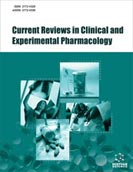
Abstract
The number of patients with functional loss of bone and cartilage tissue has shown an increasing trend. Insufficient or inappropriate conventional treatments applied for trauma, orthopedic diseases, or other bone and cartilage-related disorders can lead to bone and cartilage damage. This represents a worldwide public health issue and a significant economic burden. Advanced therapeutic medicinal products (ATMPs) proposed promising alternative therapeutic modalities by application of cell-based and tissue engineering approaches. Recently, several ATMPs have been developed to promote bone and cartilage tissue regeneration. Fifteen ATMPs, two related to bone and 13 related to cartilage, have received regulatory approval and marketing authorization. However, four ATMPs were withdrawn from the market for various reasons. However, ATMPs that are still on the market have demonstrated positive results, their broad application faced limitations. The development and standardization of methodologies will be a major challenge in the coming decades. Currently, the number of ATMPs in clinical trials using mesenchymal stromal cells or chondrocytes indicates a growing recognition that current ATMPs can be improved. Research on bone and cartilage tissue regeneration continues to expand. Cell-based therapies are likely to be clinically supported by the new ATMPs, innovative fabrication processes, and enhanced surgical approaches. In this study, we highlighted the available ATMPs that have been used in bone and cartilage defects and discussed their advantages and disadvantages in clinical applications.
Keywords: ATMPs in bone disorders, bone regeneration, cartilage regeneration, regenerative medicine, mesenchymal stromal cell, cell-based therapy.
[http://dx.doi.org/10.1007/s11657-020-0706-y] [PMID: 32306163]
[http://dx.doi.org/10.1002/jbmr.3640] [PMID: 30615801]
[http://dx.doi.org/10.1007/s00198-017-4153-6] [PMID: 28748387]
[http://dx.doi.org/10.1016/j.aap.2016.04.003] [PMID: 27177394]
[http://dx.doi.org/10.1302/0301-620X.89B4.18301] [PMID: 17463107]
[http://dx.doi.org/10.1002/jbm.a.35556] [PMID: 26282063]
[http://dx.doi.org/10.1186/1749-799X-9-18] [PMID: 24628910]
[http://dx.doi.org/10.1016/j.injury.2011.06.011] [PMID: 21752369]
[http://dx.doi.org/10.1111/j.1582-4934.2010.01224.x] [PMID: 21129153]
[http://dx.doi.org/10.3390/ph15070879] [PMID: 35890177]
[http://dx.doi.org/10.1177/230949900601400308] [PMID: 17200528]
[http://dx.doi.org/10.1088/1758-5090/aa6725] [PMID: 28300041]
[http://dx.doi.org/10.1097/BOT.0000000000000977] [PMID: 28938388]
[PMID: 25716002]
[http://dx.doi.org/10.1002/jso.25309] [PMID: 30517776]
[http://dx.doi.org/10.1186/s40824-019-0157-y] [PMID: 30915231]
[http://dx.doi.org/10.1016/j.jconrel.2013.06.024] [PMID: 23827476]
[http://dx.doi.org/10.1177/0022034514547271] [PMID: 25139365]
[http://dx.doi.org/10.1007/978-1-4939-3584-0_2] [PMID: 27236664]
[http://dx.doi.org/10.1007/s10856-014-5240-2] [PMID: 24865980]
[http://dx.doi.org/10.1016/j.injury.2006.02.040]
[http://dx.doi.org/10.2106/00004623-199173090-00004] [PMID: 1918112]
[http://dx.doi.org/10.1016/j.addr.2006.01.012] [PMID: 16574268]
[http://dx.doi.org/10.3390/ijms23052767] [PMID: 35269906]
[http://dx.doi.org/10.1053/jars.2003.50112] [PMID: 12724676]
[http://dx.doi.org/10.1093/bmb/ldn025] [PMID: 18676397]
[http://dx.doi.org/10.1177/0363546505274578] [PMID: 15716263]
[http://dx.doi.org/10.1016/j.bjps.2009.06.003] [PMID: 19577527]
[http://dx.doi.org/10.1002/jps.21528] [PMID: 18729202]
[http://dx.doi.org/10.1186/1749-799X-8-33] [PMID: 24016227]
[http://dx.doi.org/10.1111/bcpt.13478] [PMID: 32780530]
[http://dx.doi.org/10.3390/ijms24031836] [PMID: 36768157]
[http://dx.doi.org/10.1056/NEJM199410063311401] [PMID: 8078550]
[http://dx.doi.org/10.2106/00004623-200710000-00002] [PMID: 17908884]
[http://dx.doi.org/10.1177/0363546511422220] [PMID: 21908720]
[http://dx.doi.org/10.3390/bioengineering6010022] [PMID: 30871236]
[http://dx.doi.org/10.1038/267531a0] [PMID: 559947]
[http://dx.doi.org/10.1002/stem.1634] [PMID: 24449146]
[http://dx.doi.org/10.3390/ijms232213796] [PMID: 36430272]
[http://dx.doi.org/10.1177/0363546517716631] [PMID: 28745972]
[http://dx.doi.org/10.2106/00004623-200603000-00006] [PMID: 16510814]
[http://dx.doi.org/10.1016/j.injury.2008.01.040] [PMID: 18313471]
[http://dx.doi.org/10.1002/jor.1100180517] [PMID: 11117302]
[http://dx.doi.org/10.1016/j.joca.2011.02.010] [PMID: 21333744]
[http://dx.doi.org/10.1007/s00064-008-1303-1] [PMID: 19169789]
[http://dx.doi.org/10.1097/00003086-200005000-00020] [PMID: 10818982]
[http://dx.doi.org/10.1359/jbmr.2002.17.8.1420] [PMID: 12162496]
[http://dx.doi.org/10.1177/2325967119841077] [PMID: 31041335]
[http://dx.doi.org/10.5966/sctm.2016-0157] [PMID: 28191757]
[http://dx.doi.org/10.1177/2325967120973052] [PMID: 33490296]
[http://dx.doi.org/10.3390/gels8020090] [PMID: 35200471]
[http://dx.doi.org/10.1016/S0020-1383(13)70011-1] [PMID: 23351871]
[http://dx.doi.org/10.1016/j.pmrj.2015.01.023] [PMID: 25864657]
[http://dx.doi.org/10.1016/S0960-9822(01)00359-1] [PMID: 11516962]
[http://dx.doi.org/10.1016/j.devcel.2010.07.010] [PMID: 20708594]
[http://dx.doi.org/10.22203/eCM.v015a08] [PMID: 18454418]
[http://dx.doi.org/10.1016/j.injury.2011.03.031] [PMID: 21489527]
[http://dx.doi.org/10.1016/j.orthres.2005.01.013] [PMID: 16140187]
[http://dx.doi.org/10.1089/scd.2014.0490] [PMID: 25685989]
[http://dx.doi.org/10.1016/j.stem.2011.06.008] [PMID: 21726829]
[http://dx.doi.org/10.1186/s12929-021-00725-7] [PMID: 33849537]
[http://dx.doi.org/10.1016/j.tips.2020.06.009] [PMID: 32709406]
[http://dx.doi.org/10.1155/2012/980353] [PMID: 22448175]
[http://dx.doi.org/10.1002/stem.103] [PMID: 19544445]
[http://dx.doi.org/10.1080/03008207.2022.2074841] [PMID: 35856397]
[http://dx.doi.org/10.1007/s00264-016-3130-6] [PMID: 26980620]
[http://dx.doi.org/10.1016/j.injury.2021.09.061] [PMID: 34670674]
[http://dx.doi.org/10.1002/jor.22028] [PMID: 22228593]
[http://dx.doi.org/10.1111/bcp.12382] [PMID: 24645974]
[http://dx.doi.org/10.1177/1759720X16642372] [PMID: 27247633]
[http://dx.doi.org/10.1302/2633-1462.110.BJO-2020-0129] [PMID: 33215094]
[http://dx.doi.org/10.2174/1574888X12666170915121137] [PMID: 28914208]
[http://dx.doi.org/10.1002/sctm.18-0053] [PMID: 30592390]
[PMID: 18523506]
[http://dx.doi.org/10.1186/s13287-021-02689-9] [PMID: 35012666]
[http://dx.doi.org/10.1016/j.arthro.2018.07.028] [PMID: 30455086]
[http://dx.doi.org/10.1016/j.joca.2014.06.035] [PMID: 25008204]
[http://dx.doi.org/10.1002/jor.21413] [PMID: 21445989]
[PMID: 28900383]
[http://dx.doi.org/10.2147/DDDT.S356936] [PMID: 35509492]
[http://dx.doi.org/10.1002/jcp.29615] [PMID: 32020624]
[http://dx.doi.org/10.1177/0363546520988069] [PMID: 33591794]
[http://dx.doi.org/10.1186/s13063-020-04771-8] [PMID: 33036661]
[http://dx.doi.org/10.2217/rme-2017-0032] [PMID: 28635368]
[http://dx.doi.org/10.3390/bioengineering9030111] [PMID: 35324800]
[http://dx.doi.org/10.3389/fphar.2019.00921] [PMID: 31543814]
[http://dx.doi.org/10.1007/s40778-015-0012-6]
[http://dx.doi.org/10.26633/RPSP.2021.10] [PMID: 33859678]
[http://dx.doi.org/10.1177/0363546507311095] [PMID: 18202295]
[http://dx.doi.org/10.1007/s40273-018-0737-z] [PMID: 30426462]
[http://dx.doi.org/10.1038/nrd3052] [PMID: 20190786]
[http://dx.doi.org/10.52198/22.STI.41.OS1613] [PMID: 35920337]
[http://dx.doi.org/10.2217/rme-2017-0152] [PMID: 29417902]
[http://dx.doi.org/10.2217/rme-2019-0068] [PMID: 32043426]
[http://dx.doi.org/10.1186/s13287-019-1248-3] [PMID: 31113476]
[http://dx.doi.org/10.1186/s13075-016-1195-7] [PMID: 27993154]
[http://dx.doi.org/10.1186/s13287-021-02631-z] [PMID: 34717765]
[http://dx.doi.org/10.1016/j.joca.2019.02.330]
[PMID: 36043984]
[http://dx.doi.org/10.1186/s13287-021-02432-4] [PMID: 34174963]
 19
19 2
2



























